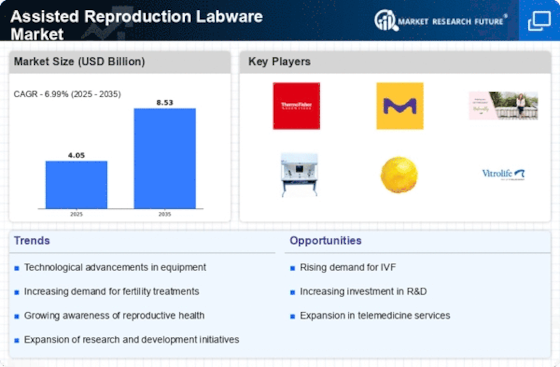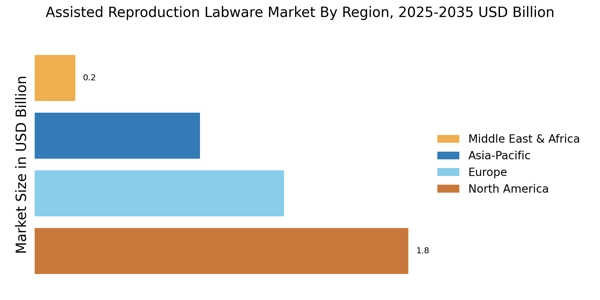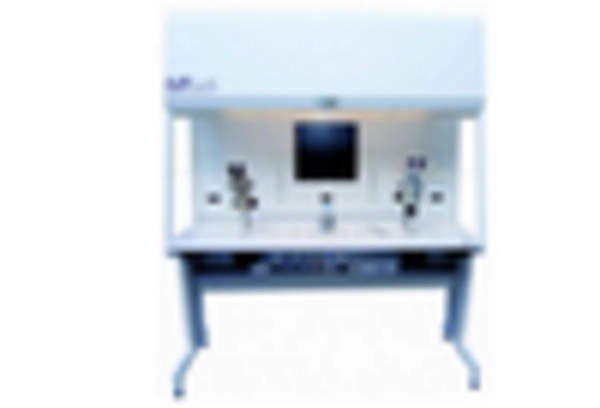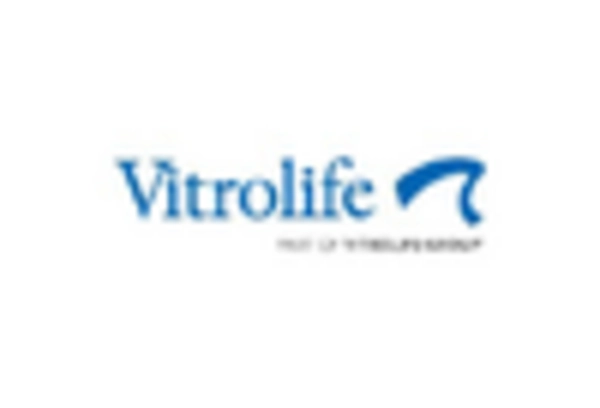Regulatory Support and Standards
The Assisted Reproduction Labware Market is positively influenced by the establishment of regulatory support and standards that govern assisted reproductive technologies. Regulatory bodies are increasingly recognizing the importance of ensuring safety and efficacy in reproductive procedures, leading to the development of guidelines that promote best practices in labware usage. This regulatory framework not only instills confidence among healthcare providers and patients but also encourages investment in the market. As compliance with these standards becomes a prerequisite for market entry, manufacturers are motivated to innovate and improve their product offerings, thereby driving market growth.
Increased Awareness of Fertility Issues
The Assisted Reproduction Labware Market is witnessing a notable increase in awareness regarding fertility issues among the general population. This heightened awareness is largely attributed to educational campaigns and the proliferation of information through digital platforms. As individuals become more informed about reproductive health, there is a corresponding rise in the demand for assisted reproductive technologies. Reports indicate that nearly 15% of couples face infertility challenges, which has led to a growing acceptance of assisted reproduction as a viable solution. Consequently, this trend is expected to drive market growth, as more individuals seek out labware and technologies that facilitate successful reproductive outcomes.
Rising Demand for Fertility Preservation
The Assisted Reproduction Labware Market is experiencing a rising demand for fertility preservation services, particularly among individuals delaying parenthood for personal or professional reasons. This trend is fueled by societal changes and advancements in reproductive technologies that allow for the safe storage of eggs, sperm, and embryos. As more individuals opt for fertility preservation, the demand for specialized labware designed for cryopreservation and storage is expected to increase. Market analysts project that this segment will see substantial growth, as the awareness of fertility preservation options continues to expand, further propelling the overall market for assisted reproduction labware.
Collaborative Efforts in Research and Development
The Assisted Reproduction Labware Market benefits significantly from collaborative efforts in research and development among academic institutions, healthcare providers, and industry stakeholders. These collaborations foster innovation and the sharing of best practices, which are essential for advancing reproductive technologies. For example, partnerships between universities and biotech firms have led to breakthroughs in genetic screening and embryo selection techniques. Such advancements not only enhance the efficacy of assisted reproduction but also contribute to the overall growth of the market. As these collaborative initiatives continue to expand, they are likely to yield new products and services that meet the evolving needs of fertility clinics and patients.
Technological Advancements in Assisted Reproduction Labware
The Assisted Reproduction Labware Market is experiencing a surge in technological advancements that enhance the efficiency and effectiveness of reproductive procedures. Innovations such as improved incubators, advanced cryopreservation techniques, and automated systems for embryo culture are becoming increasingly prevalent. These technologies not only streamline laboratory processes but also improve success rates in assisted reproduction. For instance, the introduction of time-lapse imaging systems allows for better monitoring of embryo development, which is crucial for selecting viable embryos. As a result, the market is projected to grow at a compound annual growth rate (CAGR) of approximately 8% over the next five years, driven by these advancements that promise to revolutionize fertility treatments.


















Leave a Comment